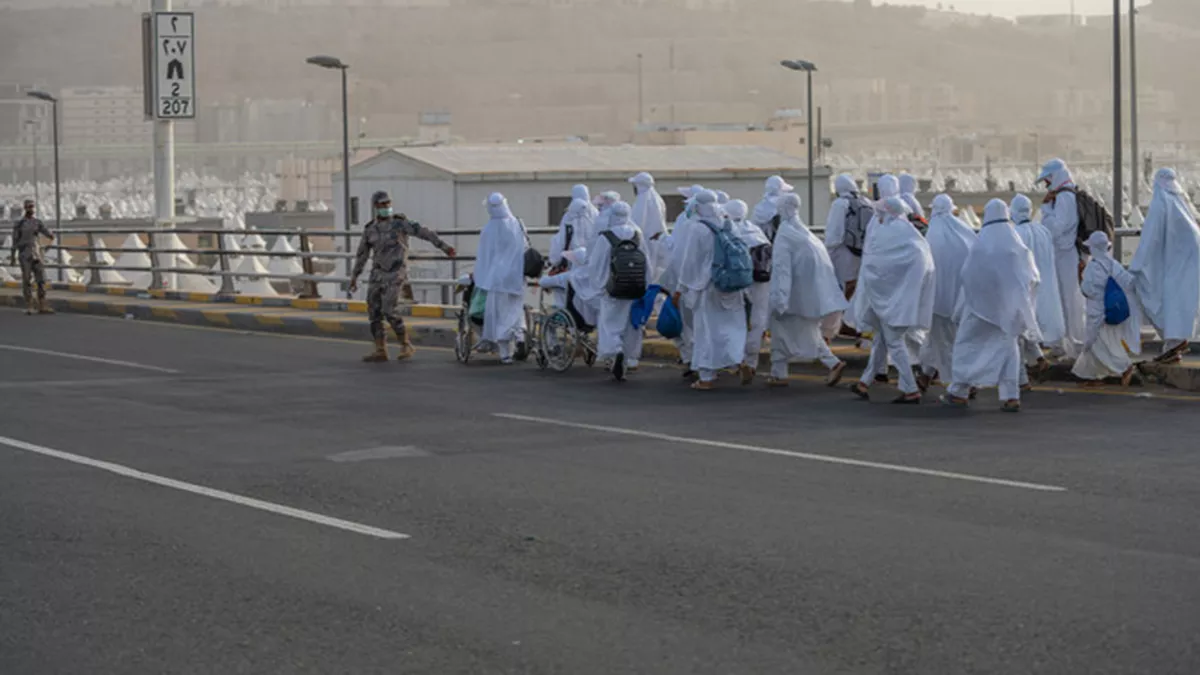
On Monday morning, when the holy pilgrimage of Hajj 1444 began, around 2 million pilgrims gathered in the tent city of Mina to start their life-changing spiritual journey.
By dusk, the site echoed with the sound of the pilgrims chanting Talbiyah, their prayer declaring their intention to do Hajj for Allah's honour. Men in traditional white seamless cotton clothing and women in abayas poured into the vast location, roughly 8 km northeast of the Grand Mosque in Makkah, saying, "Labbaik Allahumma Labbaik (Oh God, here I am answering your call)".
The first day of the journey, known as Tarwiyah Day, was spent by the pilgrims praying to atone for their sins in accordance with the Prophet Muhammad's customs. They offered the prayers of Dhuhr, Asr, Maghreb, and Isha. Overnight, they will make their final preparations before Tuesday, when they will stand before God (wuqoof) on the plains of Mount Arafat. Tuesday's morning (Fajr) prayer will be followed by the pilgrims' departure for Mount Arafat, the site of the Prophet's last speech, which was given more than 1,400 years ago.
Since the beginning of the COVID-19 epidemic, the Hajj has not been performed in its entirety until this year, and Saudi officials have put elaborate arrangements in place to guarantee the pilgrims' safety and smooth travel. In all, more than 2 million people, including 1.6 million foreigners, are anticipated.
In addition to the logistical difficulties of safely relocating so many people over the course of many days during Hajj, the oppressive heat, with temperatures hovering over 43 degrees Celsius, adds to the difficulties.
The arrival of pilgrims in Makkah and Mina was updated by Saudi officials on Monday afternoon, and they reaffirmed their dedication to the well-being and safety of all those doing the Hajj. The Ministry of Interior's spokesperson, Talal Al-Shalhoub, said that the pilgrims' transportation to Mina was complete and that they will spend the night there in order to be ready for their Tuesday journey to Mount Arafat. According to Ayed Al-Gwenem, undersecretary for Hajj and Umrah, 65% of the pilgrims made it to Mina, and the remaining 5% would be brought directly to Mount Arafat.
One of the Five Pillars of Islam is Hajj, which is performed in the month of Dhul Hijjah, the 12th and last month of the Islamic calendar. Every Muslim who is physically and financially capable of doing so is required to perform it at least once in their lifetime. Male pilgrims must put on the customary white, seamless, two-piece outfit on the first day of the Hajj before entering the hallowed state known as "Ihram." Women conceal their hair and dress comfortably.
Five days are spent performing the hajj. The eighth day of Dhul Hijjah is when it officially starts. Pilgrims travel to Mina, which is around 8 km distant, following Fajr prayers in Makkah. There, they pray and recite passages from the Qur'an all day and all night.
The next day, pilgrims travel to Arafat and stay there until dusk, praying and fasting on the arid plains. The Hajj's most significant day is this one, and those who skip it are said to have abandoned their journey. Then, pilgrims travel to Muzdalifah, a valley located between Mina and Mount Arafat, where they spend the night outside and collect tiny stones for use in a sacred ceremony the following day.
On the tenth of Dhul Hijjah, after Fajr prayers, pilgrims’ journey from Muzdalifah to Jamarat, where they throw the pebbles they've gathered at three pillars that symbolise the Devil. Women and senior citizens can assign this duty to a male. Then, they perform the Umrah when males must shave their heads and women must cut off a lock of hair. Additionally, pilgrims must sacrifice an animal and distribute the flesh to those in need. Those unable to make the sacrifice themselves might assign someone else to do it. Then, the pilgrims return to Makkah and the Grand Mosque.
